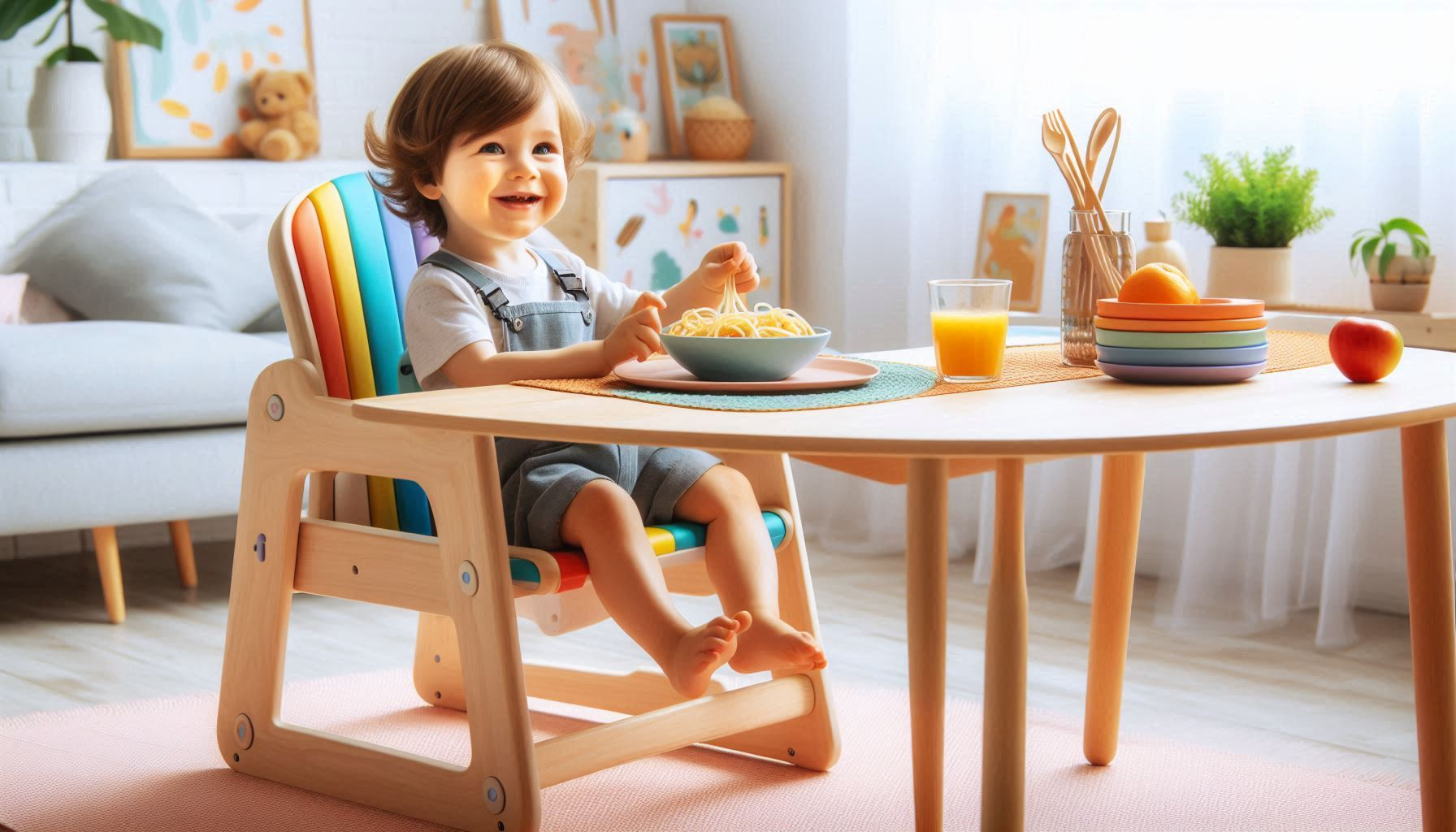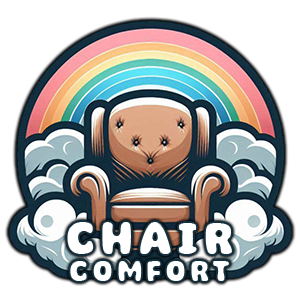
When to Stop Using a High Chair?
As parents, we’re always on the lookout for those big milestones in our kids’ lives. One of those moments is figuring out when it’s time to say goodbye to the trusty high chair. It’s not just about freeing up some kitchen space – it’s a sign that your little one is growing up and ready for more independence at mealtime. In this post, we’ll walk through everything you need to know about making this transition smooth and stress-free.
Quick Answer: Most children are ready to transition out of a high chair between 18 months and 3 years old, when they can sit steadily without support and show interest in joining family meals at the table.
My Family’s High Chair Journey
Before we dive in, let me share a quick story from my own experience. When my son Jack was about 2 years old, he started treating his high chair like a mini climbing wall. One day, I walked into the kitchen to find him perched on top of the tray, grinning from ear to ear. That was our wake-up call – it was time to make a change!
Signs Your Child is Ready to Ditch the High Chair

So, how do you know when it’s time to make the switch? Here are some telltale signs to watch for:
Physical Readiness
- Sitting Like a Pro: Your child can sit upright without support for the entire meal.
- Feet on the Floor: They can touch the ground with their feet when seated in a regular chair.
- Growth Spurt: The high chair seems too small or cramped for your growing child.
Motor Skills
- Self-Feeding Superstar: Your child can use utensils (even if it’s a bit messy) and feed themselves most of the time.
- Cup Control: They can drink from a regular cup without spilling (too much).
- Cleanup Crew: Your child shows interest in helping clear the table or wipe up spills.
Behavioral Cues
- Table Envy: Your child often asks to sit at the “big table” with the rest of the family.
- Escape Artist: They try to climb out of the high chair or undo the safety straps.
- Independence Day: Your child insists on doing things “all by myself” during meals.
Age Milestones
While every child develops at their own pace, here’s a general timeline to keep in mind:
- 18-24 months: Many children start showing interest in sitting at the table.
- 2-3 years: Most kids are ready to transition out of the high chair.
- 3+ years: If your child is still using a high chair, it might be time to encourage the switch.
Making the Transition: Step-by-Step Guide

Ready to make the move? Here’s how to do it without turning mealtime into a battleground:
1. Choose the Right Seating Option
There are a few ways to go about this:
- Booster Seat: A great in-between option that attaches to your regular dining chairs.
- Junior Chair: A smaller chair designed for toddlers that lets them sit at the table.
- Regular Chair: If your child is tall enough, they might be ready for a standard dining chair.
2. Start Slow and Steady
Don’t expect to go cold turkey on the high chair. Try these steps:
- Begin with one meal a day at the table, maybe breakfast or an afternoon snack.
- Gradually increase the number of meals at the table over a week or two.
- Keep the high chair around as a backup for a while, just in case.
3. Safety First
Your curious toddler might see their new freedom as an invitation to explore. Keep these safety tips in mind:
- Use a booster seat with a safety strap if your child is prone to wiggling.
- Push the chair close to the table to prevent falls.
- Consider a placemat with grip to keep dishes from sliding around.
- Always supervise meals, especially in the early days of the transition.
4. Make It Fun
Turn this milestone into an exciting adventure:
- Let your child pick out a special placemat or child-sized utensils for their new spot at the table.
- Create a “big kid” chart to track successful meals in their new seat.
- Celebrate the transition with a special family dinner where everyone sits together.
Overcoming Common Challenges
Even with the best planning, you might hit a few bumps along the way. Here’s how to handle them:
The Wandering Toddler
If your child keeps getting up from the table, try these strategies:
- Set clear expectations: “We sit at the table until everyone is finished eating.”
- Make meals shorter at first to match your child’s attention span.
- Use gentle reminders to guide them back to their seat.
The Messy Eater
Without the tray of a high chair, things might get a bit messier. Here’s how to cope:
- Use a large bib or smock to protect clothes.
- Place a washable mat under the chair to catch spills.
- Teach your child to use a napkin and clean up small messes.
The Reluctant Transitioner
If your child resists the change, don’t force it:
- Go back to the high chair for a while if needed – there’s no rush.
- Try a different seating option that might be more comfortable.
- Make table meals extra special with fun conversation or small rewards for sitting nicely.
Beyond the High Chair: Fostering Good Eating Habits
This transition is a great opportunity to establish healthy mealtime routines:
Family Meals Matter
Research shows that eating together as a family has numerous benefits:
- Improved language development
- Better academic performance
- Lower risk of substance abuse and depression in teens
Mealtime Manners
Now’s the time to start teaching basic table manners:
- Using “please” and “thank you”
- Waiting for everyone to be served before eating
- Asking to be excused when finished
Encouraging Healthy Choices
With their new independence, guide your child towards good food habits:
- Offer a variety of healthy foods at each meal
- Let your child serve themselves (with help) to learn portion control
- Be a role model by eating a balanced diet yourself
Real Parents, Real Experiences
I reached out to some fellow parents to hear about their high chair transition stories. Here’s what they shared:
“We switched our daughter to a booster seat at 2, and it was a game-changer for family dinners. She felt so grown-up sitting with us, and it actually improved her eating habits!” – Sarah, mom of two
“Our son resisted at first, but we made it fun by letting him decorate his new placemat. After that, he couldn’t wait to use it at every meal.” – Mike, dad of three
Wrapping It Up: Your High Chair Graduation Plan
Saying goodbye to the high chair is a big step, but with a little patience and preparation, you and your child can make this transition smoothly. Remember:
- Watch for signs of readiness – physical, behavioral, and age-related.
- Choose the right seating option for your child and your space.
- Take it slow and make the process fun and exciting.
- Stay flexible and adjust your approach if needed.
- Use this change as an opportunity to establish good mealtime habits.
Every child is unique, so trust your instincts and go at a pace that feels right for your family. Before you know it, you’ll be enjoying meals together at the table, creating memories that last a lifetime.
Next Steps
Ready to start your high chair transition journey? Here’s what you can do now:
- Assess your child’s readiness using the signs we discussed.
- Shop for a booster seat or junior chair that fits your needs.
- Plan a special “graduation” meal to celebrate this milestone.
- Start with one meal a day at the table and gradually increase.
- Share your experiences and tips with other parents in your community.
Remember, this transition is just one of many exciting steps in your child’s growth. Embrace the change, stay positive, and enjoy watching your little one become more independent every day. Happy eating, everyone!


Leave a Reply